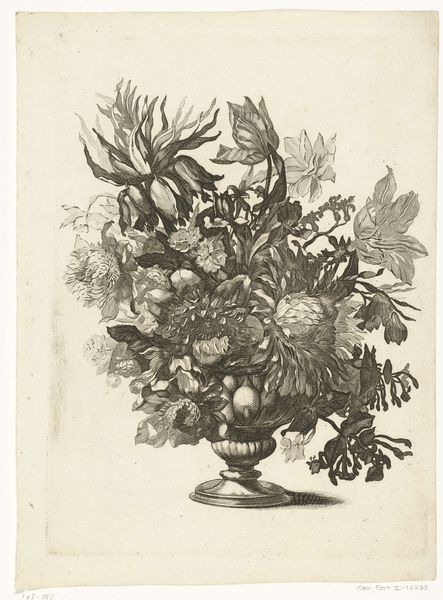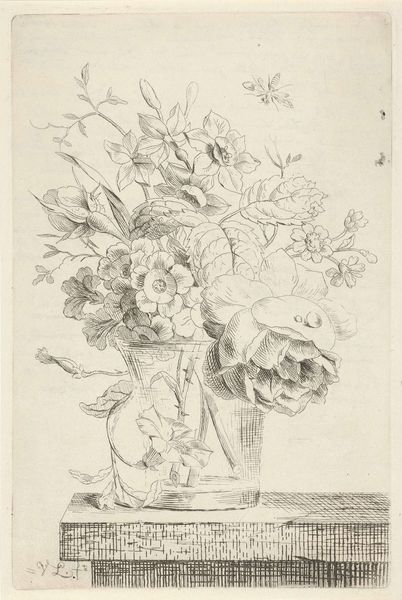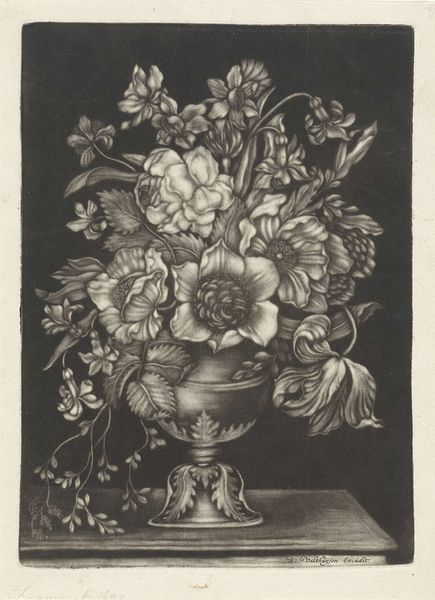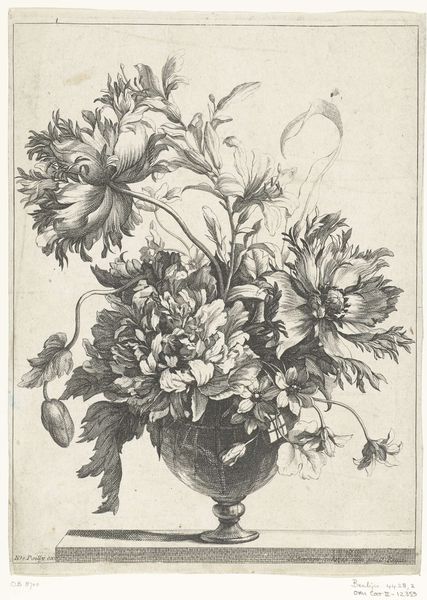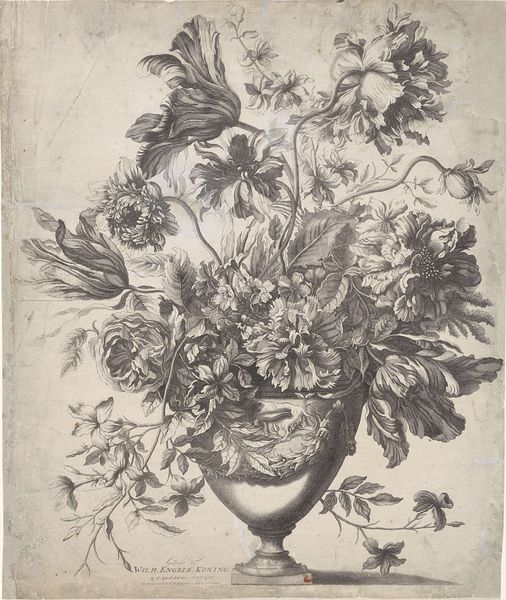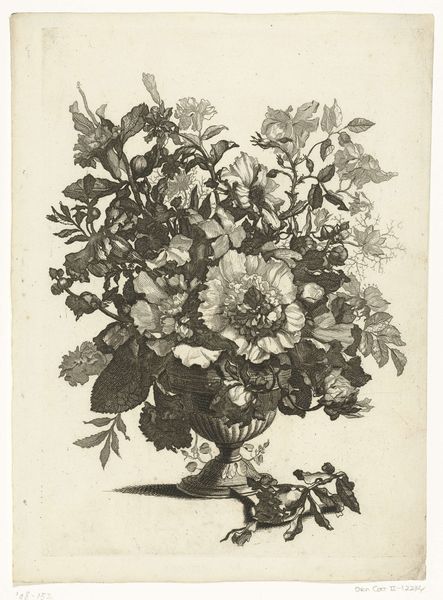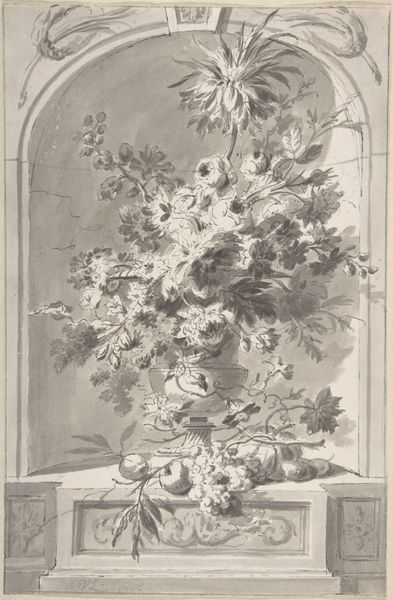
print, engraving
#
baroque
#
pen drawing
#
dutch-golden-age
# print
#
line
#
engraving
Dimensions: height 247 mm, width 184 mm
Copyright: Rijks Museum: Open Domain
Curator: Look at the meticulous details in Pieter Schenk's "Mand met bloemen," dating from somewhere between 1670 and 1713. This print, a work of engraving, resides here at the Rijksmuseum. Editor: My initial response is a stark beauty; there's almost a severe elegance. It makes me consider the constraints of depicting such vibrant life through the rigid medium of line and engraving. What statement is being made? Curator: This image is a reflection of the Dutch Golden Age’s obsession with botany, science, and commerce. Floral still lifes such as these were symbols of wealth, prosperity, and even morality, displayed proudly in homes as statements of status. Editor: Given that this work presents itself almost monochromatically, did the absence of color influence who was included or excluded from participating in the Dutch love for floral imagery? Was access to art itself dictated by color in some way? Curator: Schenk was one of many printmakers who capitalized on the booming art market of the time. Engravings such as these offered a relatively affordable way for people to possess versions of the coveted flower paintings without the cost of originals, which reflects a larger democratization of art viewing. Editor: Democratization, yes, but mediated by gendered dynamics. Flower paintings were often marketed specifically towards women, confining them within the domestic sphere through both imagery and art consumption. Is there an argument that flower prints served as pretty but restrictive tools? Curator: You pose an important question, but remember these prints served multiple purposes: they were scientific records, status symbols, decorative items, and, as we've been considering, reflections of social and cultural norms. Editor: That’s true, seeing it through an intersectional lens helps to highlight its dual role in both aesthetic appreciation and reinforcement of certain cultural boundaries. It's this kind of contrast that brings to light new conversations about our art history. Curator: Indeed. Understanding that interplay lets us learn something more nuanced. Thank you for sharing those provocative, if difficult, thoughts.
Comments
No comments
Be the first to comment and join the conversation on the ultimate creative platform.



